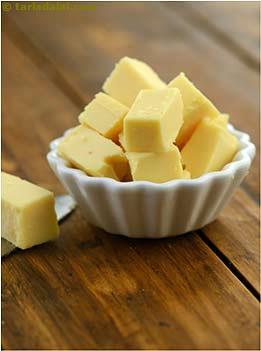Processed cheese cubes

Turn the block of processed cheese on its side and make a series of slices. Lay the cheese slices on top of each other and make a series of lengthwise slices, (½ inch slices for smaller cubes, 1 inch slices for larger cubes). Make a series of ½ inch or 1 inch crosswise cuts through the cheese and it will fall away into cubes.